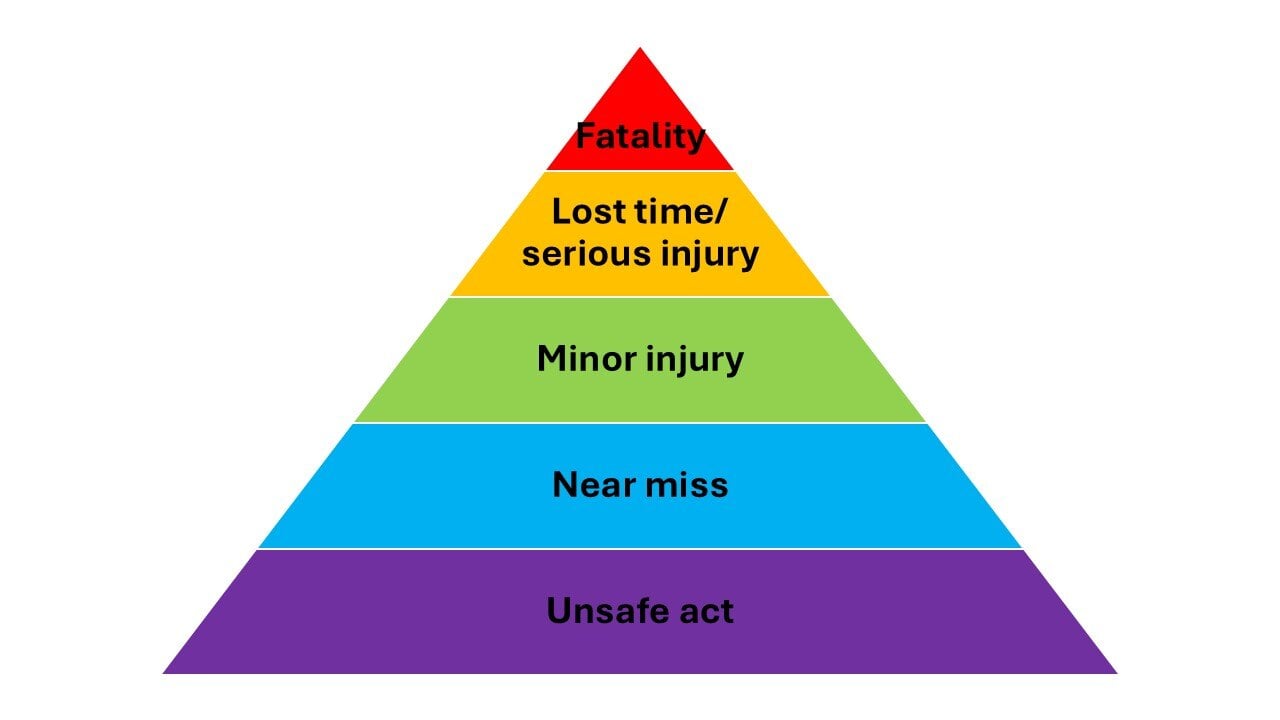With our RCV Smart Loader System and Proximity Warning Systems for mobile plant, we collect data about breaches into the danger/exclusion zone. A customer once said to me, each of these zone breaches is a potential near miss.
So why is it important to pay attention to these near misses and do everything we can to reduce them?
To explain the relationship between near misses and actual incidents some will use the Heinrich Accident Triangle (developed further by Frank E Bird).
In 1931, H.W Heinrich studied more than 75,000 accident reports from the insurance company he worked at as well as records held by individual industry sites. Using this data, he came up with the model showing that for every serious injury or accident there were 29 accidents with minor injuries and 300 near misses.
Heinrich’s Triangle Theory
The idea is that near misses (or unsafe acts) often serve as precursors to more serious incidents if the underlying issues are not addressed. Whilst the actual figures have been debated (the industry/environment you work in will have an impact on the figures), I think we can agree that the more near misses we identify and act on, the better chance we have of reducing the risk of a fatal accident. It’s also worth remembering that it’s believed about 50% of near misses don’t get reported. So, whilst you might be looking at your near miss data, you may only be seeing part of the picture.
Latest workplace fatality figures
The HSE recently published their annual work-related ill health and injury statistics for 2023/24. It shows that 604,000 workers sustained a non-fatal injury according to self-reports from the Labour Force Survey in 2023/24 (LFS), but there were only 61,663 employee non-fatal injuries reported by employers in 2023/24 (RIDDOR). A large disparity between what employees report and what gets recorded as a RIDDOR by employers! Either way, if we put this into Heinrich’s model, we’d be looking at lots of serious accidents in the workplace.
So, what can we do?
- Encourage near miss reporting – we spoke to a council recently that changed the way their staff report near misses. This simple change had a big impact on the number of near misses reported. Staff need to feel they’re in an environment where they can report unsafe acts.
- Preventative Action – take each near miss seriously. The more near misses that are investigated and mitigated, the less likely they are to escalate into serious accidents.
- Safety Monitoring - Tracking and acting on near misses is a critical component of effective safety management, aimed at reducing risks before they result in injuries or damage.

Our data platform monitors near misses for you so you can analyse the trends and act on them. You can see the person that caused the breach, what time and day, where on the site or road, with which vehicle. This information can help you improve site safety and behaviours for long term benefit.


